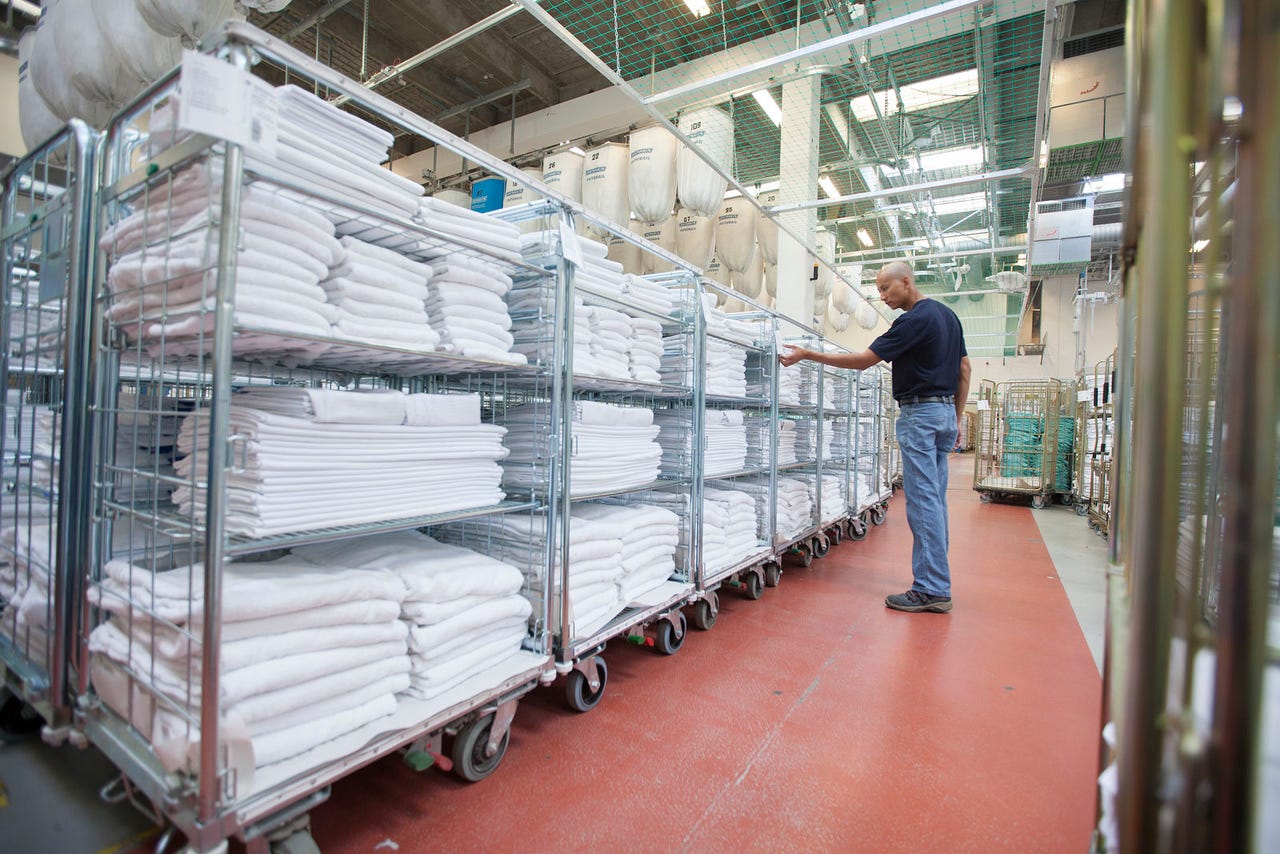The Internet of Laundry: How RFID tags in your sheets help you get a better night's sleep


Berendsen is using IoT to drive effiency across its services.
The Internet of Things (IoT): you've heard about it infiltrating your place of work, your home, your living room -- even the fridge or your kettle in the kitchen might be connected to the internet. But did you ever consider that you might be sleeping inside internet-connected bedsheets?
"Next time you're in a hotel, have a look inside the seams of the sheets; you might very well feel an RFID chip that's been sown in there," says Duncan Macmillan, IT Director at Berendsen, the FTSE 250 company that provides industrial laundry services for hotels, hospitals, and work-wear, and ships out a million items from 50 sites across the UK every single day.
Berendsen's history can be traced back over 160 years, and for the vast majority of that time its activities remained a manual process. This meant that sometimes, especially when dealing with large quantities of items being processed and cleaned, it could be difficult to keep track of everything.
"Because we're a high-volume business, we can't count every single piece, so we don't know for sure how much customers' returned. We know how much we shipped out, but there's clearly a difference between those two numbers," Macmillan explains.
In an effort to manage certain areas of the business, such as handling and tracing fire uniforms, Berendsen implemented a process of bar coding, but it was labour intensive. "The thing with bar codes is that you've got to have somebody to scan it," says Macmillan.
IoT to the rescue
However, with the rise of connected devices, technology effectively caught up with what Berendsen planned to achieve, and the company launched a Radio-Frequency Identification (RFID) tagging project in order to better deal with its inventory.
Implementation of IoT technology to scan and manage every item was helped along by Microsoft Azure to store and manage data from millions of items at a time Macmillan describes as "an effective cost point" from a "very able partner".
As a result, the project has seen RFID chips embedded into bedsheets, tablecloths, and clothing in a way that's not uncomfortable for the user. "They're sewn into the seams, so you don't really notice them".
Along with sewing chips into sheets, Berendsen has installed scanning arches -- designed much like airport scanners -- into its factories, using them to read information off the RFID chips as they enter and leave the facilities.
"When you push a cage of up to a thousand bits of linen through, it reads it; then, when it's out the other side, you know what linen was in that cage," Macmillan says.
Connecting the simplest of items -- a sheet -- to an internet-connected network has enabled Berendsen to gain a much better insight into the status of linen in the cycle it goes through every single day.
"We know when the vans arrive in the morning and when we run the dirty linen -- which can come back in all sorts of states, and shapes and mixed up. But when you run it into the scanner, you immediately know exactly what you've got in your production line," says Macmillan.
"It takes away a lot of the guesswork about where our material is as it flows through the production facility. That gives us much greater control of stock, much greater security and much tighter control. And of course it means we can see where everything is on a single dashboard as it goes through the system," he adds.
Connecting bedsheets to the IoT doesn't just provide benefits for Berendsen, it also allows hotel customers to better manage their stock.
"Nobody likes sleeping in stale sheets, so once the sheets are eight weeks old, you don't want to be putting them on the bed," Macmillan says. "What this allows us to do is say 'somewhere around here you've got sheets which haven't been used in seven weeks and really they need to be put back into the cycle, used and returned and freshened up'. So there's all sorts of advantages that we can make available based on the technology," he explains.
And for Berendsen, embedded chips into bedsheets, equipment, and clothing is only the beginning of a journey that could see the IoT implemented in many other ways.
"There's obvious directions that we can go down. The investment in the machines to do the washing is quite high, as the washers we use cost a couple of million pounds and are 20 metres long; so there's all sorts of capabilities for using IoT in the machines to understand what they're doing and how they're running," says Macmillan.
"You can imagine how you could increase the amount of automated materials handling and operate on lower-sized batches -- not washing 1,000 at a time but just running the pieces needed through. There's all sorts of possibilities about how we can start using the capability to get a better result for our customers".
Read more on the Internet of Things
- 10 ways to prepare enterprises for the Internet of Things
- CIO Jury: 50% of IT leaders will invest in IoT in 2017 [TechRepublic]
- From parking to farming, applications for NB-IoT are heading out into the real world
- Samsung pledges $1.2 billion for Internet of Things research in US [CNET]
- IoT and Agriculture: A natural combination